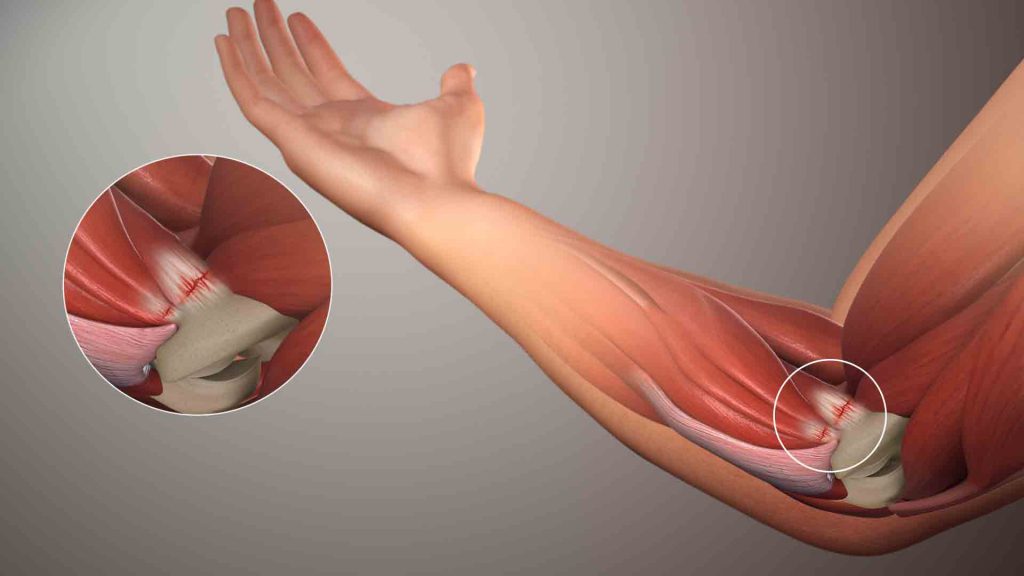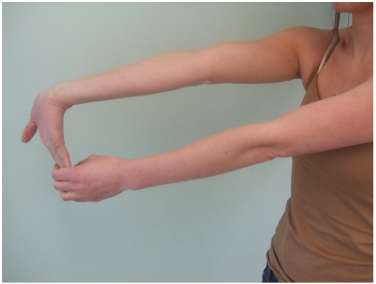
For me, it was the left elbow
Maybe it shouldn’t have come as a surprise that I suffered from golfer’s elbow after playing 63 holes of golf in one day. I think I was lucky, because it was never too painful and it only took me a couple of weeks to get over the worst of the pain. Golfer’s elbow is a result of overusing the muscles in the forearm that allow you to grip, rotate your arm, and flex the wrist. This causes tiny tears in the tendon that can lead to severe pain in the forearm.
Treatment
Also called medial epicondylitis, golfer’s elbow is mostly fixed by the worst treatment of all, as far as I’m concerned: rest. I did stop playing for two whole days, played a round at Littlehampton Golf Club, which made it worse. I took another two days off, played at Crowborough Beacon Golf Club and THEN finally took a whole week off. So I didn’t really rest as much as I should have, but I did play less.
 My vice-captain Kim, who is a sports therapist, advised me to perform the following stretch at regular intervals: fully straighten the elbow with my hand facing upwards. Using your other hand, pull your hand down as far as you comfortably can. You should feel a stretch on the inside of your elbow and forearm; this should not be painful. Then, keeping the arm in the same position, pull the hand up. She also advised to massage the painful area. It hurt. I also wore a support strap while playing golf, which did bring some relief.
My vice-captain Kim, who is a sports therapist, advised me to perform the following stretch at regular intervals: fully straighten the elbow with my hand facing upwards. Using your other hand, pull your hand down as far as you comfortably can. You should feel a stretch on the inside of your elbow and forearm; this should not be painful. Then, keeping the arm in the same position, pull the hand up. She also advised to massage the painful area. It hurt. I also wore a support strap while playing golf, which did bring some relief.
Prevention
It’s pretty much gone now, but what can I do to prevent it happening again? I found some relevant advice on the NHS site:
- Stop doing the activity that is causing pain, or find an alternative way of doing it that does not place stress on your tendons.
- Before playing a sport that involves repetitive arm movements, warm up properly and gently stretch your arm muscles to help avoid injury.
- Wear a golfer’s elbow splint when you are using your arm, and take it off while you are resting or sleeping to help prevent further damage to your tendons. Ask your GP or physiotherapist for advice about the best type of brace or splint to use.
- Increasing the strength of your forearm muscles can help prevent tennis elbow. A physiotherapist can advise you about exercises to build up your forearm muscles.
Strengthening the forearm muscles
I like this video on how to strengthen your hand, wrist and forearm. Dr Levi Harrison has such a soothing voice that you’ll heal just by listening to him.
